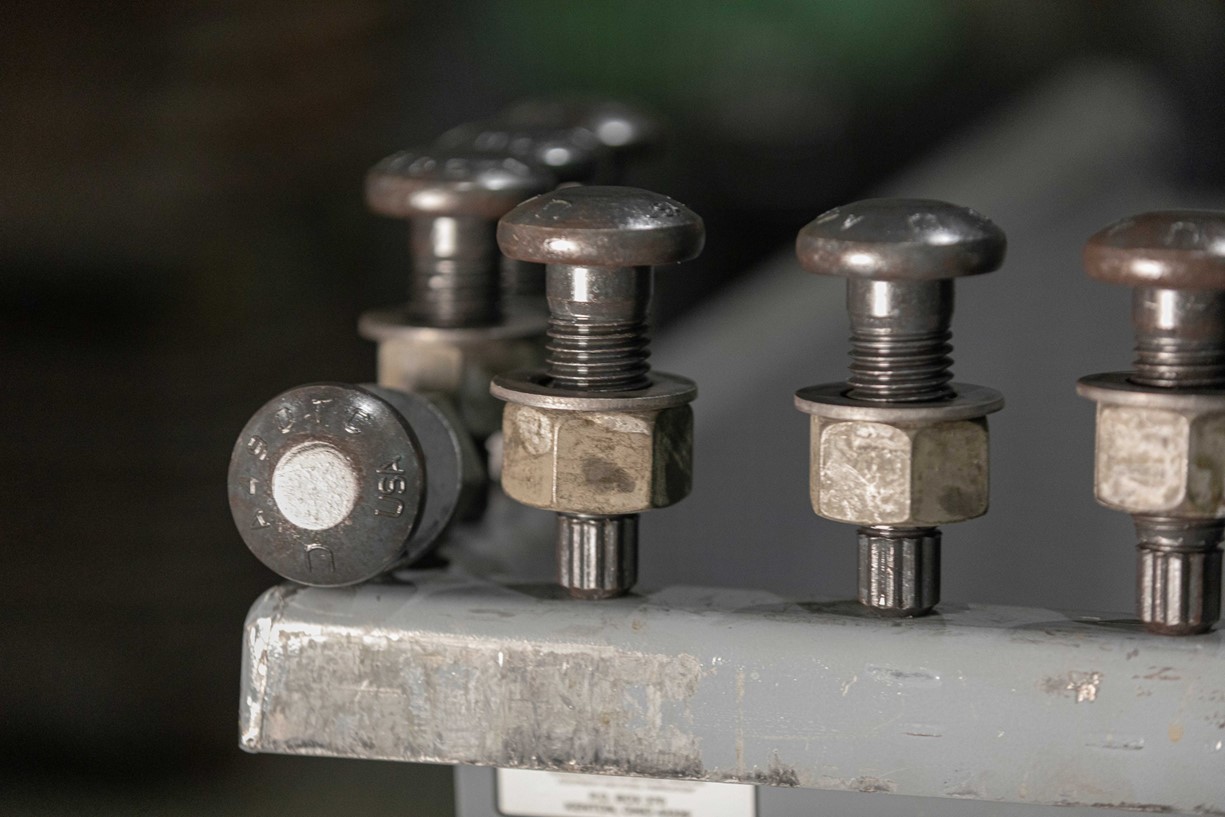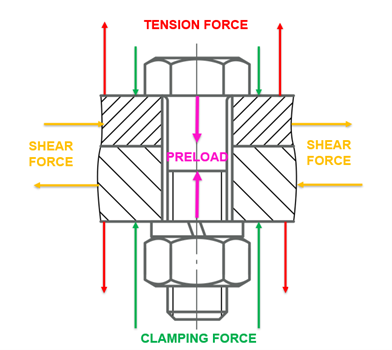Fasteners 101: Three Factors for a Successful Bolted Steel Connection

Fasteners are utilized across many types of construction projects and materials to join two or more objects together in a permanent or non-permanent way. Fasteners serve an essential purpose across all industries including agriculture, automotive, construction, energy, heavy equipment, infrastructure and transportation. It is crucial for industry professionals to be informed about the varying types of fasteners and proper installation techniques.
Steel is the most common fastener material due to its strength, durability and ability to withstand exposure to elements such as moisture and a range of temperatures . Since fasteners are a vital aspect of maintaining structural integrity, it’s important to understand how to create a successful bolted steel connection.
1. Design the Correct Loading for the Joint
To ensure the connection can safely handle the forces it will encounter, designing the correct loading for a bolted steel joint is essential. Proper load distribution helps prevent joint failure, bolt slippage or deformation under tension or other combined forces. By accurately calculating and designing for the anticipated loads, engineers can create reliable, long-lasting steel connections.
A designer employs threaded joints (like bolts and nuts) primarily to create secure, reliable connections in structures.

Reasons to use threaded joints:
- Relatively easy to remove and re-assemble as needed
- Generates a compressive load to hold or clamp two or more parts
- No-stress or lightly stressed joints are typically less critical
- Stressed joints are typically critical joints
Understanding the forces involved in the connection is crucial to designing a robust bolted joint that can withstand operational loads without failure.

Forces in a bolted Joint [Source]
- Preload is the tension (or stretch) that is developed in the bolt during the tightening process. Properly applying preload tension ensures that the joint can resist external forces, enhancing the connection's overall strength and durability while preventing loosening or failure.
- The tension from the preload generates clamp load, which is the resulting, opposite load (force) from the preload (or tension) which acts like a vise and compresses and clamps the items together. The clamp load prevents movement between the parts and helps distribute forces across the joint.
Designing the correct loading for the joint is an imperative first step because it ensures that the connection can safely and efficiently handle the forces it will encounter, which will help prevent joint failure, minimize maintenance and extend the lifespan of the structure.
2. Select the Right Fastener
Selecting the right fastener is crucial to creating a strong, reliable bolted connection for a structure. Designers and engineers must consider several factors when choosing fasteners, and they must be compatible with the loads the joint will experience, including environmental factors.
Since the preload directly affects the joint’s ability to handle forces, you must have a clear understanding of the preload requirements. The fastener must be capable of achieving the correct preload without exceeding its strength limits. By selecting a fastener that matches the preload needs, engineers can ensure that the joint maintains its integrity and effectively resists external loads.
Understanding the effects of bolt strength is an important element of selecting fasteners because:
- Higher-strength bolts are more brittle than lower-strength joints and they will plastically deform less after they begin to yield, so tightening control near the yield point becomes critical.
- Higher-strength bolts can stretch more before yielding, meaning they can achieve higher preloads, so they have greater capacity to achieve higher preloads than lower-strength bolts.
Proper fastener selection ensures the joint can maintain its integrity under operational stresses, minimizes the risk of failure and contributes to the overall durability and safety of the structure.
3. Proper Installation of the Fastener
Even if you have a fastener with a top-tier design, if it’s not installed properly, this will result in a poor or weak joint compromising the integrity of the entire structure.
When installing fasteners, it's important to understand that torque does not equal tension, but rather, applying torque generates tension in the fastener. Torque is the rotational force applied to tighten the bolt, while tension is the stretching force created within the bolt as it gets tightened. The goal of applying torque is to generate the correct tension or preload in the fastener, which holds the joint securely together and ensures the joint’s strength and stability.
What happens to torque?
- Most torque is used to overcome friction in the bearing surface and the threads.
- Only a small portion (about 10%) of the torque is converted into tension.
Both over-tightening and under-tightening fasteners can lead to joint failure. Over-tightening typically occurs during installation when tightening criteria are not specified in the plans and lubrication is misunderstood . Fastener lubrication often helps reduce friction and potential corrosion by creating a barrier between the metals.
Issues from over-tightening fasteners:
- Fastener breaks/strips during assembly
- Permanently stretches the material and cannot be reused
- May deform the joint/clamped material
- Increased vulnerability to Stress Corrosion Cracking (SCC) or Hydrogen Embrittlement (HE)
On the other hand, under-tightening typically occurs when tightening criteria are not specified and there is insufficient lubrication and increased friction.
Issues from under-tightening fasteners:
- Desired tension not achieved
- The joint is vulnerable to cyclic loading and fatigue fractures
- The fastener may come loose
Properly tightening fasteners to the specified torque ensures the correct preload, preventing both over- and under-tightening issues.
Nucor’s Steel Fasteners

Nucor manufactures a full range of steel fasteners with customizable head styles, dimensions and grades, and our team can accommodate special finishes, patches, adhesives and other secondary processing requests. Nucor Fasteners are produced exclusively of sustainable, domestically produced steel made with circular, electric arc furnace (EAF) technology. As the largest domestic producer of ASTM F3125 products, Nucor produces fasteners in Type 1 and Type 3 (weathering) steels, including Grades A325 (120 ksi) & A490 (150 ksi) with world-class customer service and technical support.
Nucor produces high-strength structural fasteners in two styles:
- Tru-Tension®: a twist-off style tension control assembly offering many cost savings to installers
- Heavy hex fasteners